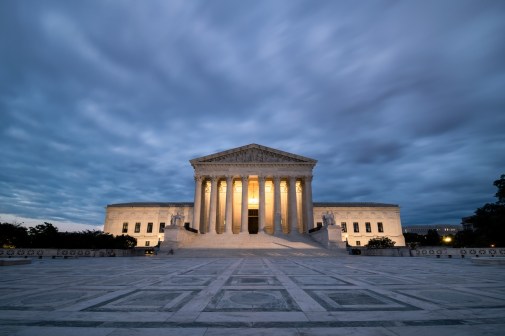GSA joins FCC to bring Wi-Fi to schools
The Federal Communications Commission plans to distribute $2 billion in the next two years to modernize America’s schools’ with Wi-Fi connectivity through an expansion of its E-Rate program. To do so, the commission entered a partnership with the General Services Administration to deliver on that goal using the agencies’ purchasing power to reduce the cost of modernizing classrooms and libraries throughout the country.
The two agencies formalized the agreement June 19 and announced the blanket purchasing agreement late last week. Specifically, the partnership should cut costs through GSA’s “front-loaded discount pricing” and “reverse auction approach,” according to a GSA blog post.
President Obama in 2013 as part of his ConnectED initiative called for pervasive Wi-Fi in 99 percent of American schools and libraries by 2018. “In a nation where we expect free Wi-Fi with our coffee, why shouldn’t we have it in our schools?” Obama questioned.
Making good on Obama’s charge, FCC Chairman Tom Wheeler announced earlier in June his commission’s update to its E-Rate program, an initiative launched in 1998 to modernize telecommunications and Internet services in schools. While his proposal’s main goal focuses on Wi-Fi implementation, another major concern is reducing cost and making E-Rate dollars go further. That, explained FCC Managing Director Jon Wilkins in a blog post, is where GSA comes in.
“Once implemented, the BPAs would allow schools and libraries to utilize the GSA’s reverse auction platform to seek bids from equipment vendors at prices even better than those already available under the relevant GSA schedule,” Wilkins wrote. “Given that data in our record indicates that equipment makes up as much as 80 percent of the total cost of internal network deployment, this would provide a real opportunity for all schools and libraries to save potentially significant amounts as they upgrade their internal connections, and allow our limited E-rate dollars to go further.”
Cutting costs may be imperative if the FCC hopes to fulfill the president’s wishes. Whereas Wheeler has pledged $1 billion a year for the next two years to expand Wi-Fi in schools, an independent study claims the FCC would need to spend as much as $3.2 billion in the next four years to achieve 99 percent Wi-Fi availability, not to mention other yearly maintenance costs, which the report estimates to be about $1.6 billion. In the past, the E-Rate program has been allotted about $2.25 billion each year.
Some aren’t thrilled by the chairman’s plans, though. A group of educators penned a letter to Wheeler and the FCC stating their frustration with the proposed E-Rate Wi-Fi expansion, particularly their concerns with the sustainability of the advancements after the first two years and dissatisfaction with fund distribution.
“We strongly believe that the E-rate Program must continue to distribute funds in an equitable way, based on need (calculated by level of poverty and locale), and not by a formula that will water down support for all areas,” the letter, sponsored by the National Education Association and co-sponsored by a doze other groups, states. “Moving away from a need-based method by incorporating a per-pupil allocation erodes the equitable distribution of E-rate funds as well as our ability to ensure funds reach those it was designed to help: those schools, libraries and communities most in need.”
And others said that rudimentary connectivity, like high-speed ethernet-based broadband, must be addressed in all schools before the FCC moves forward with adding Wi-Fi. The American Library Association recently suggested the FCC focus on increasing speeds of broadband rather than making it wireless.
Nevertheless, Wheeler urged that his proposal get approved at the July FCC meeting so the U.S. can make up on the current connectivity lag in libraries and schools, and the GSA partnership should help achieve that in a cost-effective manner.
“We all know the E-Rate program is in need of modernization,” he said. “Our choice is whether we help millions more students by acting before the end of summer vacation, or whether we stick with the status quo until the 2016 funding year. I hope my colleagues will agree that the cost of inaction is too high.”
The GSA-FCC E-Rate purchasing plan should be available next year, GSA said.






